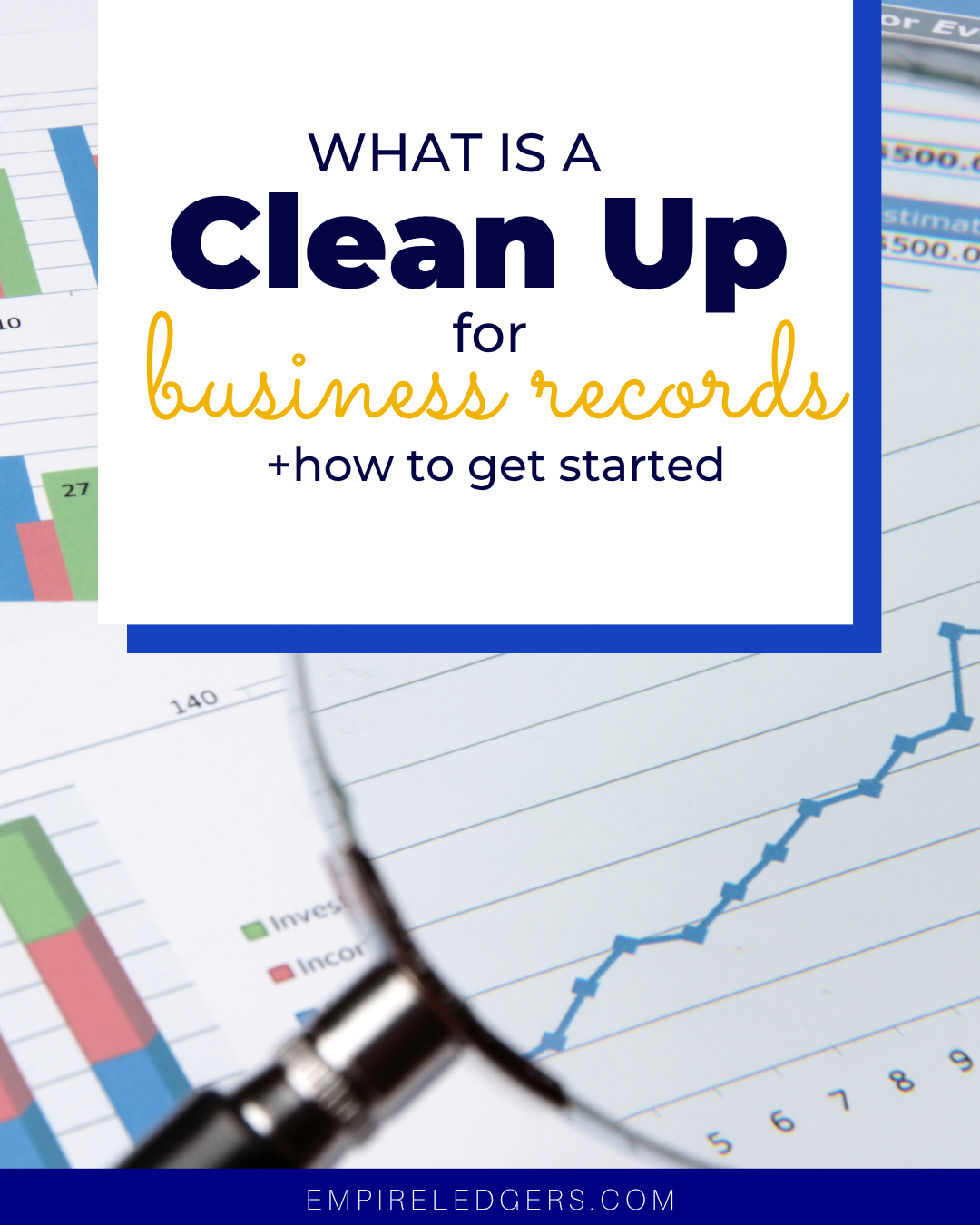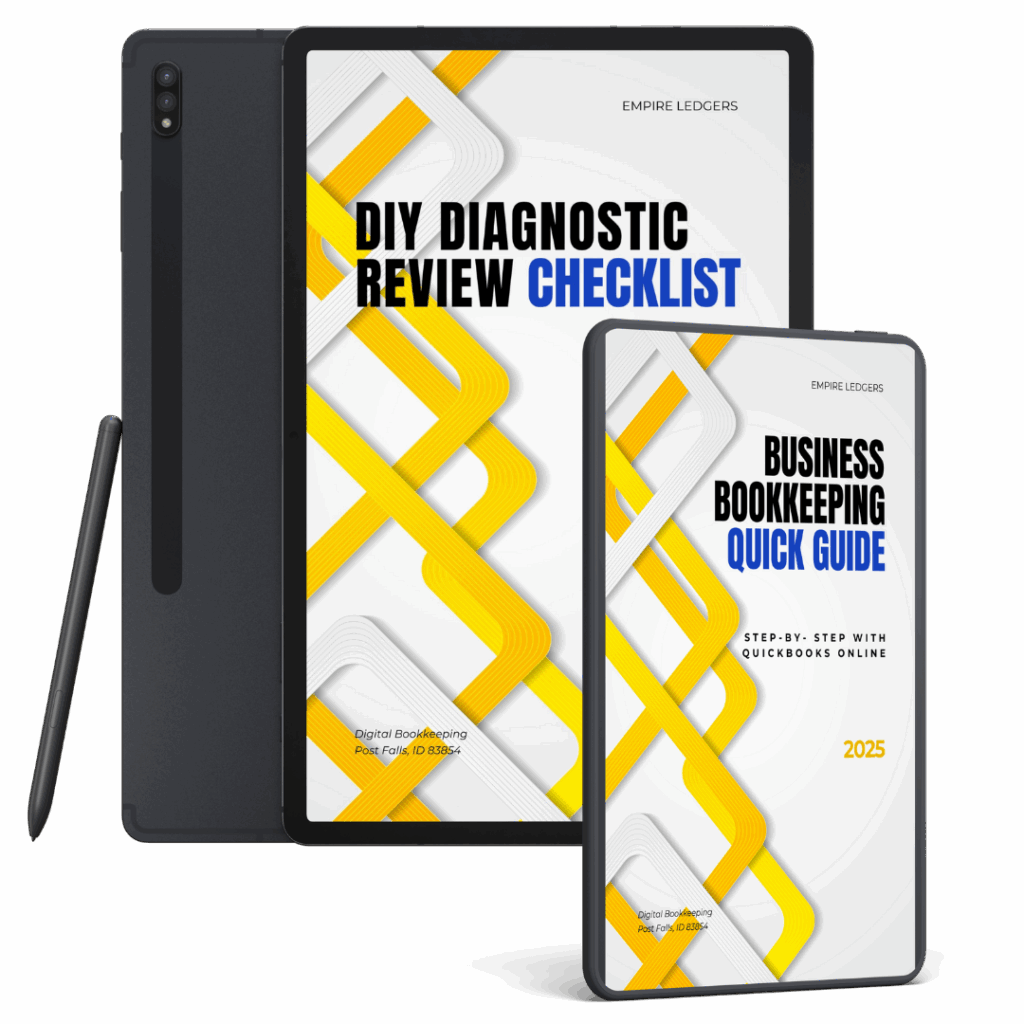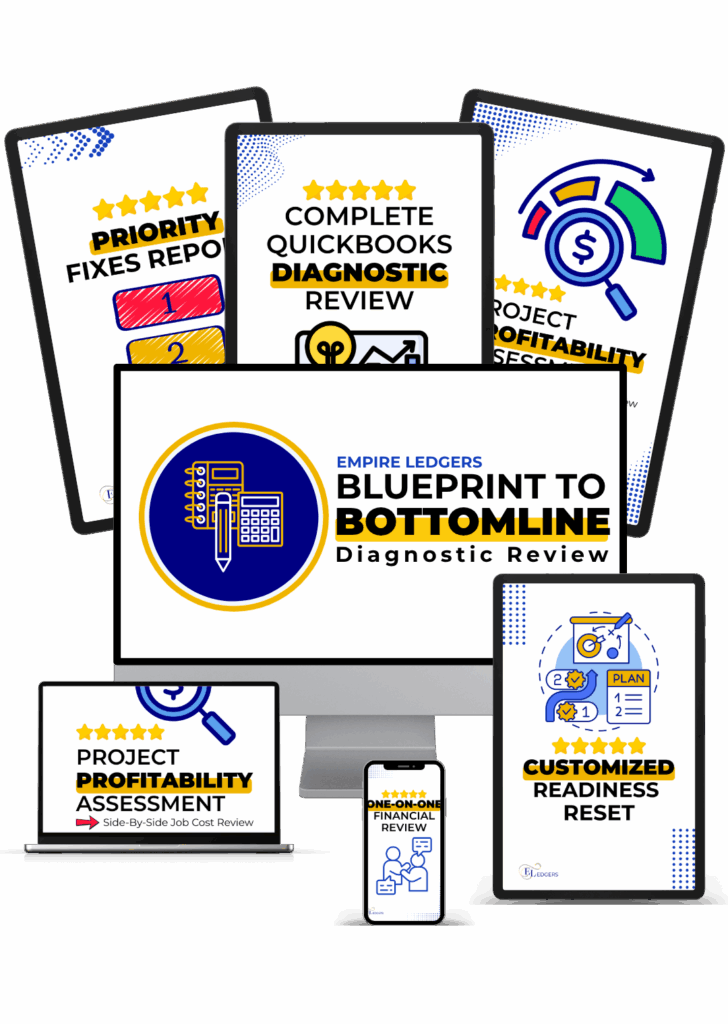What Is a Financial Records Cleanup For Your Business?

If you’re a trade service business owner—whether you’re running a plumbing company, HVAC service, or electrical contracting firm—chances are your books have gotten a little messy. Between job sites, vendor payments, and client invoices, bookkeeping often takes a backseat. But when your financial records are disorganized, it can lead to cash flow issues, missed deductions, and even IRS penalties.
That’s where a financial records cleanup comes in. Think of it as a deep clean for your business’s financial health—scrubbing away errors, reconciling accounts, and restoring accuracy so you can make confident financial and personal decisions that line up with your goals.
What Is a Financial Records Cleanup?
A financial records cleanup is the process of reviewing, correcting, and organizing a business’s financial records to ensure they are accurate, complete, and up-to-date. It is necessary to fix past mistakes, catch up on missed entries, and get everything in order for a fresh start.
For example, if a client hasn’t recorded their expenses for the last six months, leaving their profit-and-loss statement completely off, or if they’ve been categorizing personal expenses as business expenses, creating messy records that don’t reflect reality, a bookkeeping cleanup is essential to untangle the chaos, identify errors, and get the books back on track.
Why a Cleanup Is Essential After a Diagnostic Review
Alright, let’s break this down. A Diagnostic Review is like popping the hood on your business. We run the tests, check the vitals, and see exactly what’s working—and what’s not. You walk away with answers: where your financial records are off, where things are missing, where money might be leaking.
But here’s the thing: just knowing what’s wrong doesn’t fix it.
That’s where the Cleanup comes in. This is where we roll up our sleeves and start correcting what the review uncovered. Think of it as the treatment plan after the diagnosis. If your diagnostic revealed months of uncategorized expenses, unreconciled accounts, or tax liabilities lurking in the shadows—those don’t resolve themselves. We need to clean up the mess so you’re not building on a shaky foundation.
Because without the cleanup? You’re still flying blind. Reports are unreliable. Your CPA can’t do their job. And you can’t make smart decisions when your numbers are a mix of guesswork and crossed fingers.
The cleanup turns your books from a warning light into a dashboard you can actually trust. And once it’s done—you’re not just caught up. You’re clear, current, and ready to move forward.
That’s the difference between surviving and scaling. Let’s make sure you’re doing the latter.

Download My FREE guide
Business Bookkeeping Quick Guide + DYI Diagnostic Review Checklist
WHAT A CLEAN UP LOOKS LIKE
1. Mapping Your Transaction Trail
Think of this as CSI: Bank Statement. You want to follow every dollar from deposit to expense, uncovering gaps, duplicates, or phantom transactions along the way. Grab your statements, your calendar, and maybe a cup of coffee—because this is where you’ll pinpoint exactly where your money went (or didn’t). No more “mystery charges” haunting your profit & loss.
2. Bridging the Backlogged Months
Six months of unentered receipts? No shame—it happens. The goal here is rapid reconciliation, not reinventing the wheel. Block off a few focused hours, batch those receipts by week or project, and knock them out in manageable chunks. You’ll be surprised how quickly “catch-up” becomes “up to date.”
3. Categorization Calibration
Are you calling lunch “meals,” “office expense,” or “client entertainment”? Consistency is your friend. Pull your chart of accounts, create clear category definitions, and apply them retroactively. Bonus: you’ll thank yourself at tax time when deductions are crystal-clear and nothing gets misfiled under “Miscellaneous.”
4. Vendor & Client Statement Squaring
Those unposted bills from your lumber supplier or that past-due invoice to the homeowner? Now’s the time to square them up. Send a friendly reminder on vendor bills, chase down unpaid client invoices, and adjust your aged receivables and payables. Cash flow feels so much better when you actually know who owes what.
5. Tax-Time Triage & Compliance Check
Finally, give your cleanup one last pass through a tax lens. Make sure payroll tax filings match your payroll journal, sales tax remittances align with your receipts, and estimated tax payments are logged. This isn’t just busywork—it’s peace of mind. Filing season becomes less of a sprint and more of a leisurely stroll.
HOW TO DIY TROUBLESHOOT YOUR BOOKS
Before diving into a full cleanup, it’s helpful to perform a quick DIY diagnostic review to identify areas that need attention. Here’s a step-by-step guide:
- Gather All Financial Records: Collect bank statements, credit card statements, receipts, invoices, and any other financial documents.
- Reconcile Bank and Credit Card Accounts: Ensure that your bank and credit card statements match your accounting records.
- Review Transactions for Accuracy: Check for duplicate entries, missing transactions, or miscategorized expenses.
- Verify Accounts Receivable and Payable: Ensure that all invoices sent and received are accounted for and that there are no outstanding payments.
- Check Payroll Records: Confirm that employee payments, tax withholdings, and benefits are accurately recorded.
- Assess Tax Compliance: Review your tax filings to ensure that all required taxes have been filed and paid on time.
If you encounter discrepancies or areas of concern during this review, it may be time to consider a comprehensive cleanup.
Catch Up with Confidence—And Still Enjoy Your SUNDAY
Our Blueprint to Bottomline Diagnostic Review is designed to provide a thorough assessment of your financial records. We analyze your books to identify errors, inefficiencies, and opportunities for improvement. This diagnostic review serves as the foundation for a comprehensive cleanup, ensuring that your financial records are accurate, organized, and compliant.
By leveraging our expertise, you can transform your financial records from a source of stress into a strategic asset that supports your business’s growth and success.
We’re not playing cleanup. We’re diagnosing the root issues that are costing you profit, clarity, and peace of mind. so you can:
- Stop leaking profit
- Get your job costing dialed in
- Make smart decisions backed by real numbers
- Finally understand what the heck your books are telling you
This is perfect for you if you’re tired of guessing, flying blind, or waiting until tax time to figure out if you made money.

If you’re ready to take control of your financial records and set your trade service business up for success, our team is here to help. Contact us today to schedule your Blueprint to Bottomline Diagnostic Review and start your journey toward financial clarity and confidence.


Nice respond in return of this query with solid arguments and
explaining everything about that.